Canadian lynx (Lynx canadensis)
This majestic predator from cold Canada, despite very well-developed hunting techniques, couldn’t survive without its most important prey – the snowshoe hare. As Wolf and Bunny from a Russian (Soviet) series, the hare and the lynx fight and dig pits for each other. This competitive relation is, however, fundamental for the existence of both species. It even seems that the lynx is a specialist in killing those lagomorphs, and the hare has become an expert in escaping.
Let’s visit frigid and remote regions of Earth for a moment, where the lynx is certainly one of the most important guards of nature.
Classification
- Class: Mammalia
- Order: Carnivora
- Family: Felidae
- Genus: Lynx
- Species: Canada lynx / Canadian lynx (Lynx canadensis)
- Subspecies:
- Lynx canadensis canadensis
- Lynx canadensis mollipilosus
- Newfoundland lynx (Lynx canadensis subsolanus) – larger than the continental subspecies, it can hunt caribou calves.

Occurrence and habitats
This North American endemic species occurs mostly in Canada and Alaska, at the edge of forested areas. It can be also found in western Montana and parts of Idaho and Washington. Small populations live in New England and Utah, possibly in Oregon, Wyoming and Colorado.
The population of the Canada lynx overlaps with the habitats of its favorite prey – the snowshoe hare (Lepus americanus). Therefore, the lynx chooses thick boreal forests (taiga), rocky areas and open forest formations for its habitats.
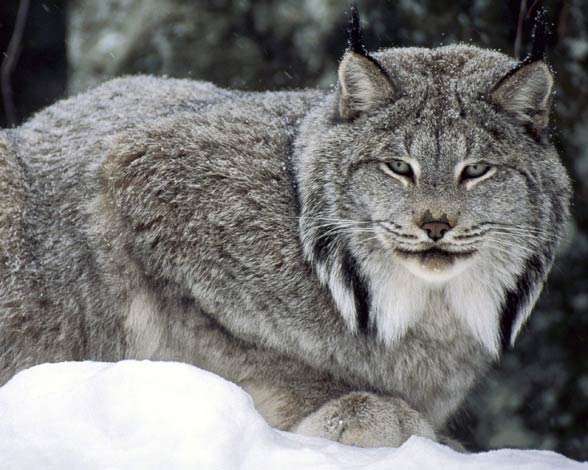
Characteristic
Appearance
The body of the Canada lynx is very similar to the body of the Eurasian lynx (Lynx lynx), although it is smaller. The winter coat of the Canada lynx is dense, silvery brown with black points. In the summer, the coat becomes reddish and brownish. On the sides of the jaw, there are characteristic mutton chops that form a collar enveloping the neck in the winter (the lynx wears a scarf then :)). The tips of the ears are covered with black tufts of fur.
A robust silhouette of the Canada lynx is supported by long limbs with wide paws that play the role of snowshoes (they prevent the lynx from “drowning” into deep snow). The forelimbs are slightly shorter than hinder limbs, therefore, the cat seems to be hunched.
Size
The Canada lynx’s body length ranges from 76-106 cm (30 – 42 in), height at shoulders 48-56 cm (19 to 22 in), and weight 5-17 kg (11 – 37 lb). Males are larger than females. In terms of the size, this species exceeds the average bobcat (Lynx rufus), with whom it shares some hunting areas.
Similarly to the other lynx species, the Canadian hunter has 28 teeth, including 4 canine teeth that the lynx uses to immobilize its prey. The posterior teeth cut meat into smaller pieces. Between the canines and the rest of teeth there is a large diastema (a crevice between teeth) which allows the lynx to sink its canines deep into its prey’s body.

Diet
The abovementioned snowshoe hare is an immanent part of the Canada lynx’s diet. It has been observed that the populations of these two species are dependent on each other. Because when the number of hare is low in a given season, the mortality in young and adult Canada lynxes is high. However, if there is abundance of hare in a given year, also the number of lynxes increases. Apart from the snowshoe, the predator also hunts birds, fish and deer, mostly in the summer.
Hunting techniques
During hunting, hearing and sight are the most important senses. The cat observes its surroundings carefully, and when it sees a possible prey, it waylays or follows the prey (depending on the topography). When the lynx decides that this is the moment, it jumps on the prey. It also eats carrion occasionally.
The Canada lynx has poor physical condition – it can run fast for short distances, but it gets tired after several tens of meters. So if a lynx doesn’t catch its prey in the first few seconds after the attack, it gives up on chasing it (the lack of physical condition is a typical feature of all cats).
It hunts mostly at night, but also at daytime from time to time. It prefers hunting alone, but females may do this with their young that help their mothers. One of the young makes a prey leave its shelter, while the rest waylays nearby to quickly catch the escapee.
When the lynx catches a large prey, it buries it under a pile of leaves as stock of food.

Temper
Except for females taking care of their young, the Canada lynx is solitary, in terms of its territory as well. The acreage of one male may include the territory of one or more females and their young. Depending on a given individual, the size of its territory may be 15-50 km2 (6 – 19 mi²). However, these values may extremely vary from 3 to 780 km2(1.2 – 300 mi²). The Canada lynx expands its territory when food is scarce and cats need to search for it in other places.
Except for the mating season, which is in the winter, adult lynxes of both sexes try to avoid each other. They mark borders of their territories with scent, mostly urine and feces.
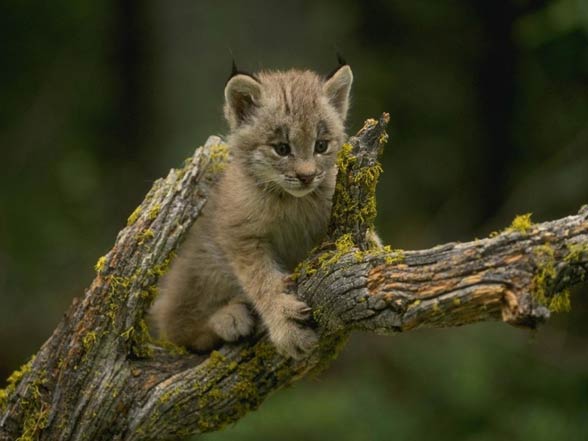
Reproduction
The mating season lasts a month, between March and April, depending on local climate conditions. At that time, a female comes into the estrus cycle only once and it lasts for 3-5 days, so the female tries to attract a male with scent markings left in the same places in which the male has left his. A female can additionally attract a male by calling.
A female copulates only with one male in the mating season, and a male can mate with several females.
Pregnancy lasts about 64 days, the young are born in May or June. Before giving birth, a female prepares a den in dense bushes or wood debris. One litter consists of 1-4 kittens. When there is enough food in a given season, kittens are big and robust.
When there is not enough food, the mortality of young Canada lynxes may reach up to 95%. Therefore, if food, mostly the snowshoe hare, doesn’t provide kittens with proper nutrition in a given breeding season, females don’t let males mate with them (it seems that lynxes are more sensible than many people).

Young
Newborn kittens weigh 175-235 g and are covered with greyish fluff with black markings. For the first two weeks they’re blind and defenseless. Their eyes are light blue at first, and then they become light brown.
Kittens drink their mother’s milk for about 12 weeks. Then, the female brings food to the den. It allows the young playing with food – thanks to that the kittens improve their hunting skills.
Young lynxes leave their den after about 5 weeks, but they start to hunt only after 7-9 months. They leave their mother when they’re about 10 months old. During that time, females may usually reproduce, but they get pregnant for the first time only next year. Males are able to reproduce only after 2-3 years after birth.
The Canada lynx is fully grown when it’s about 2 years old.

Detailed information / size
Canada lynx / Canadian lynx (Lynx canadensis)
- Body length: 76 – 106 cm (30 – 42 in)
- Tail length: 5 – 12 cm (2 – 4.7 in)
- Height at shoulders: 48 – 56 cm (19 – 22 in)
- Weight: 5 – 17 kg (11 – 37 lb)
- Lifespan: to 14 years in captivity, shorter in the wild

Canadian lynx – interesting facts
- The snowshoe hare usually constitutes 60 – 90% of the Canada lynx’s diet.
- The Canada lynx crosses 2.5 – 5 km (1.6 – 3 mi) every day to find food.
- The Canada lynx kills one snowshoe hare on average per 2-3 days.
- The Canada lynx doesn’t wander off further than 100 meters (330 ft) from the forest edge.
- The Canada lynx doesn’t avoid water. Its swimming skills have been confirmed by a recording in which a Canada lynx swims 3.2 km (2 miles) across the Yukon River.
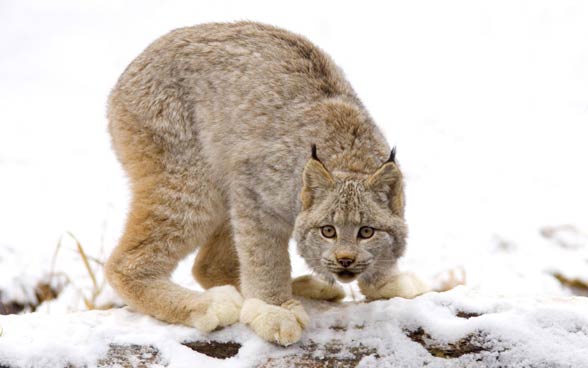
Recommended
- Barbary lion
- Siberian tiger
- Bengal tiger
- Sumatran tiger
- Indochinese tiger
- Malayan tiger
- Tigers
- White tigers
- Lions
- White lions
- Lion vs tiger
- Liger
- Pallas’s cat
- Clouded leopard
- Sand cat
- Animal fights
- American lion
- European cave lion
- Smilodon – Saber-toothed tiger
- Big cats
- Black panther
- Leopard
- Snow leopard
- African Lion
- Fastest animals
- Fastest birds







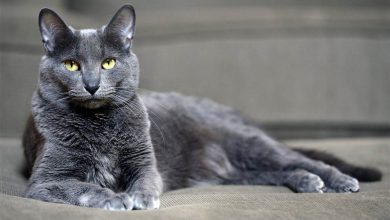



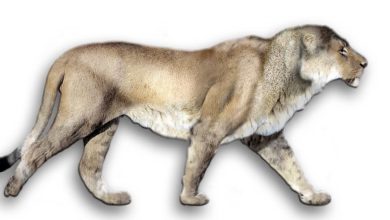
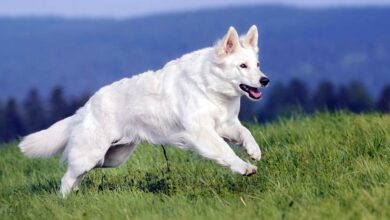



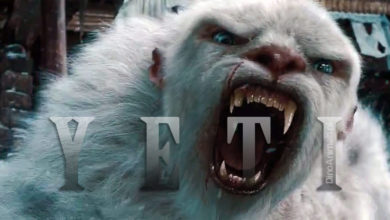
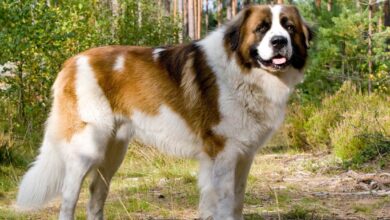
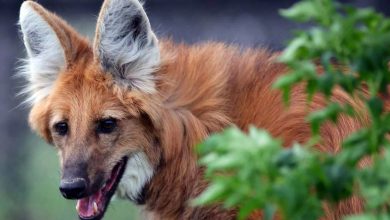
snowshoe hares are lagomorphs, not rodents.
Of course, thank you 🙂